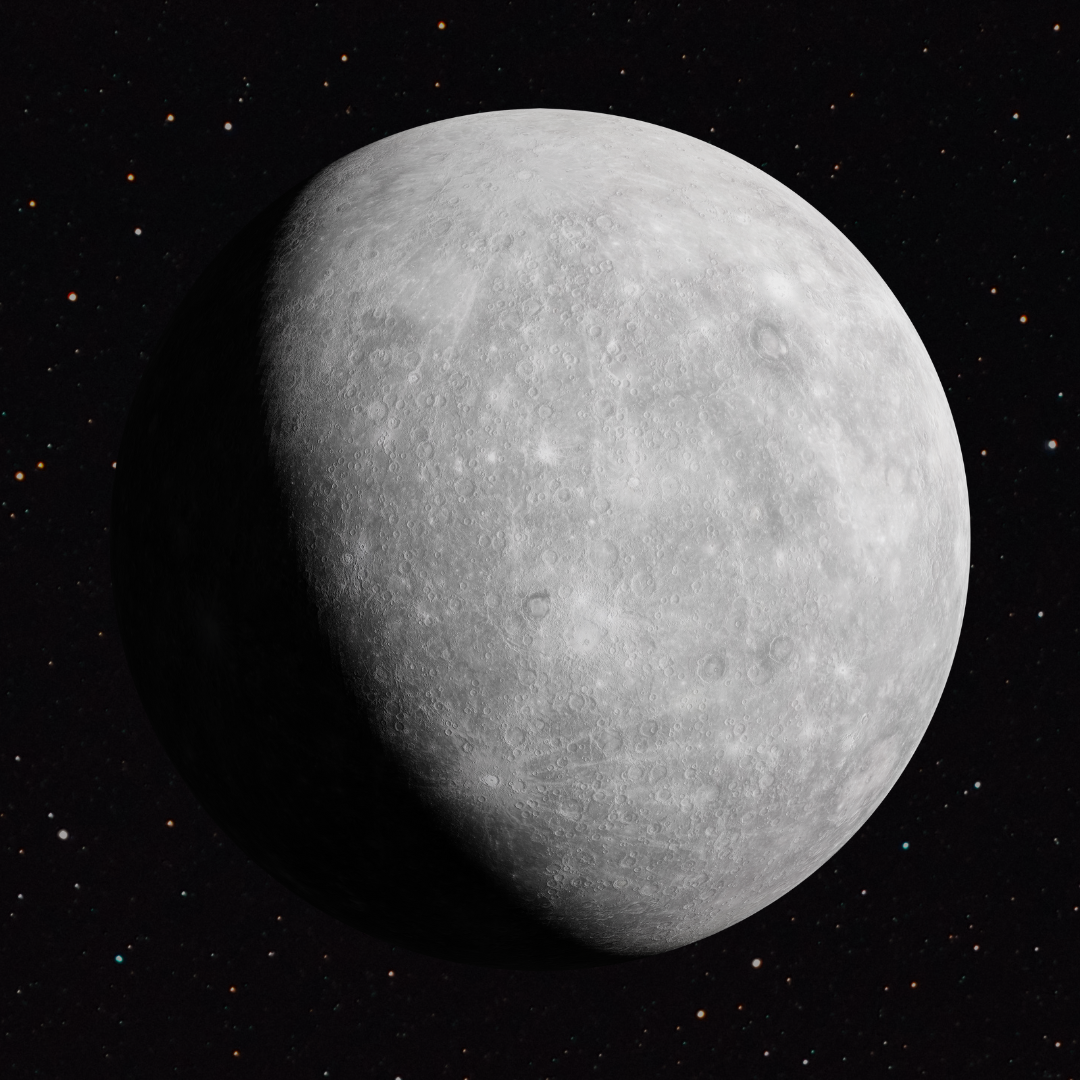
Solar System: Mercury
Mercury, the smallest planet in our solar system and the closest to the sun, is a fascinating object of study for astronomers and space enthusiasts alike. Named after the Roman messenger god, Mercury is a rocky, barren world with a heavily cratered surface and a scorching hot environment. In this blog post, we will explore the characteristics and history of Mercury, as well as its importance for our understanding of the solar system.
Mercury's Characteristics:
Mercury is a small, terrestrial planet that is about one-third the size of Earth. It has a diameter of 4,880 km (3,032 miles) and a mass of 3.3 x 10^23 kg, making it the smallest planet in the solar system. Due to its proximity to the sun, Mercury has a highly elliptical orbit and completes one revolution around the sun in just 88 Earth days. Its rotation is also unusual, as it rotates three times for every two revolutions around the sun, resulting in a "day" on Mercury (the time it takes for one rotation) that is 59 Earth days long.
Mercury's surface is heavily cratered and has a high albedo, or reflectivity, due to the presence of a thin layer of dust and debris on the surface. The planet has no atmosphere to speak of, which means that it is exposed to the full force of the sun's radiation and solar wind. This results in a daytime temperature that can reach up to 430°C and a nighttime temperature that can drop to -180°C.
Mercury's History:
Mercury has been known to humans for thousands of years, as it is visible to the naked eye and was often mistaken for a star. However, it was not until the invention of the telescope that scientists were able to study the planet in detail. In 1631, Italian astronomer Giovanni Zupi observed the planet's phases, similar to those of the moon, and in 1639, English astronomer Thomas Harriot drew a map of Mercury's surface.
It was not until the Mariner 10 spacecraft's flyby in 1974 that scientists were able to gather detailed information about Mercury's surface and environment. Mariner 10 made three flybys of the planet, mapping about 45% of the surface and discovering that the planet has a weak magnetic field. In 2011, NASA's MESSENGER spacecraft entered orbit around Mercury and conducted a comprehensive study of the planet, mapping its surface in detail and providing new insights into its geology, composition, and history.
Mercury's Importance:
Studying Mercury is important for several reasons. First, it provides clues about the early history of the solar system. Mercury is thought to have formed from the same cloud of gas and dust that gave rise to the sun and the other planets, and its composition and structure can help us understand the processes that led to the formation of the solar system.
Second, Mercury's extreme environment provides a unique laboratory for studying the effects of solar radiation and solar wind on a planetary body. This information is important for understanding the processes that shape the surfaces and atmospheres of other planets and moons in our solar system and beyond.
Finally, Mercury's proximity to Earth and its small size make it an ideal target for spacecraft missions. Studying Mercury up close can help us develop new technologies and techniques for exploring other planets and moons in the solar system and beyond.
